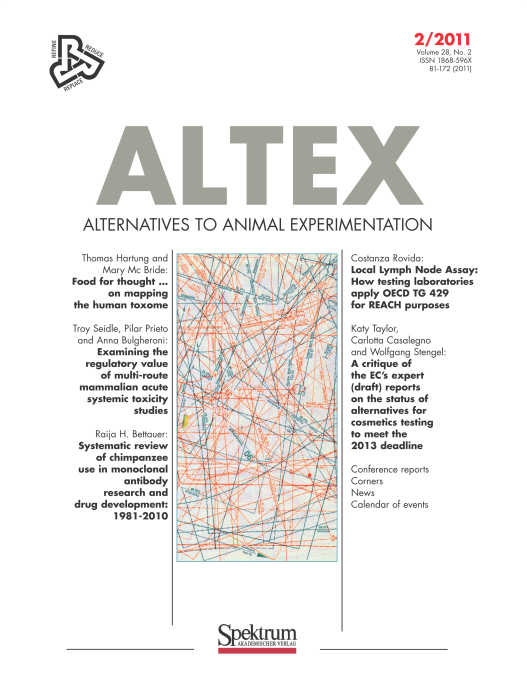A critique of the EC’s expert (draft) reports on the status of alternatives for cosmetics testing to meet the 2013 deadline
Main Article Content
Abstract
The 7th Amendment to the EU’s Cosmetic Directive (now recast as Regulation 1223/2009) bans the testing of cosmetic ingredients and products on animals, effective 2009. An extension until 2013 was granted, for marketing purposes only, for three endpoints: repeated dose, toxicokinetics, and reproductive toxicity. If the European Commission determines that alternatives for these endpoints are not likely to be available, it can propose a further extension. To this end, the Commission has instructed experts to produce reports on the status of alternatives for the 2013 deadline.
We criticized the draft reports on a number of issues. First, the experts fell into the “high fidelity fallacy trap,” i.e. asserting that full replication of the in vivo response, as opposed to high predictivity, is required before an animal test can be considered useful for regulatory purposes. Second, the experts’ reports were incomplete, omitting various methods and failing to provide data on the validity, reliability, and applicability of all the methods discussed, regardless of whether the methods were in vivo, in vitro, or in silico.
In this paper we provide a summary of our criticisms and provide some of the missing data in an alternative proposal for replacement of animal tests by 2013. It is our belief that use of the Threshold of Toxicological Concern (TTC) will be a useful method to mitigate much animal testing. Alternative approaches for carcinogenicity and skin sensitization could be considered sufficient in the very near future, even though these tests are not listed under the 2013 extension. For repeated dose, toxicokinetics, and reproductive toxicity a combination of in vitro methods may be able to provide appropriate protection for consumers, especially when viewed in the context of the poor predictivity of the animal models they replace. We hope the revised report will incorporate these comments, since a more thorough and positive review is required if the elimination of animal testing for cosmetics in Europe and beyond is to be achieved.
Article Details
Articles are distributed under the terms of the Creative Commons Attribution 4.0 International license (http://creativecommons.org/licenses/by/4.0/), which permits unrestricted use, distribution and reproduction in any medium, provided the original work is appropriately cited (CC-BY). Copyright on any article in ALTEX is retained by the author(s).


